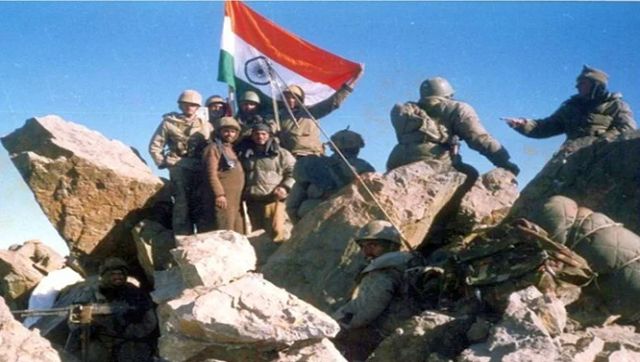The Kargil War was a conflict between India and Pakistan that took place from May to July 1999 in the Kargil district of Jammu and Kashmir. The war concluded with India successfully pushing back the Pakistani forces, and reclaiming the occupied positions. Some interesting facts about the Kargil War: Cause: The Kargil conflict was triggered by Pakistan’s decision to send infiltrators into the Indian territory. These infiltrators occupied strategic high points along the Line of Control (LoC), aiming to cut off the vital supply route from Srinagar to Leh and thereby escalating tensions in the region. Tactics: The response by the Indian military was a combination of ground operations and airstrikes. They launched a three-pronged offensive to drive out the Pakistani intruders, and utilised a mix of infantry, artillery, and air support to dislodge the enemy. Harsh Terrain: The terrain in the Kargil sector is rugged and mountainous, with altitudes exceeding 18,000 feet. The extreme weather conditions and high altitude posed immense challenges in conducting military operations. Important Operations: 1. Operation Vijay: This was the code name for India’s military action to recapture the occupied posts and rid the region of infiltrators. 2. Tiger Hill: One of the most strategically significant operations. Tiger Hill was a heavily fortified Pakistani position, and its capture by the Indian Army was a turning point in the war. 3. Battle of Tololing: Another crucial operation where Indian troops faced tough resistance but eventually managed to secure the position. 4. Operation Safed Sagar: This was the codename for the Indian Air Force’s (IAF) airstrikes against Pakistani positions. The IAF conducted numerous airstrikes to support the ground forces. Diplomacy: During the conflict, the international community played a crucial role in diplomatic efforts to de-escalate the situation. The United States and other countries put pressure on Pakistan to withdraw its troops from Indian territory. Pakistan’s actions were widely condemned internationally, and the United Nations passed a resolution calling for an immediate ceasefire. Aftermath: The conflict highlighted the need for improved intelligence and vigilance along the LoC. It also underscored the significance of diplomatic efforts in preventing further escalation.
The Kargil conflict was triggered by Pakistan’s decision to send infiltrators into the Indian territory. The war concluded with India successfully pushing back the Pakistani forces, and reclaiming the occupied positions
Advertisement
End of Article


)

)
)
)
)
)
)
)
)



